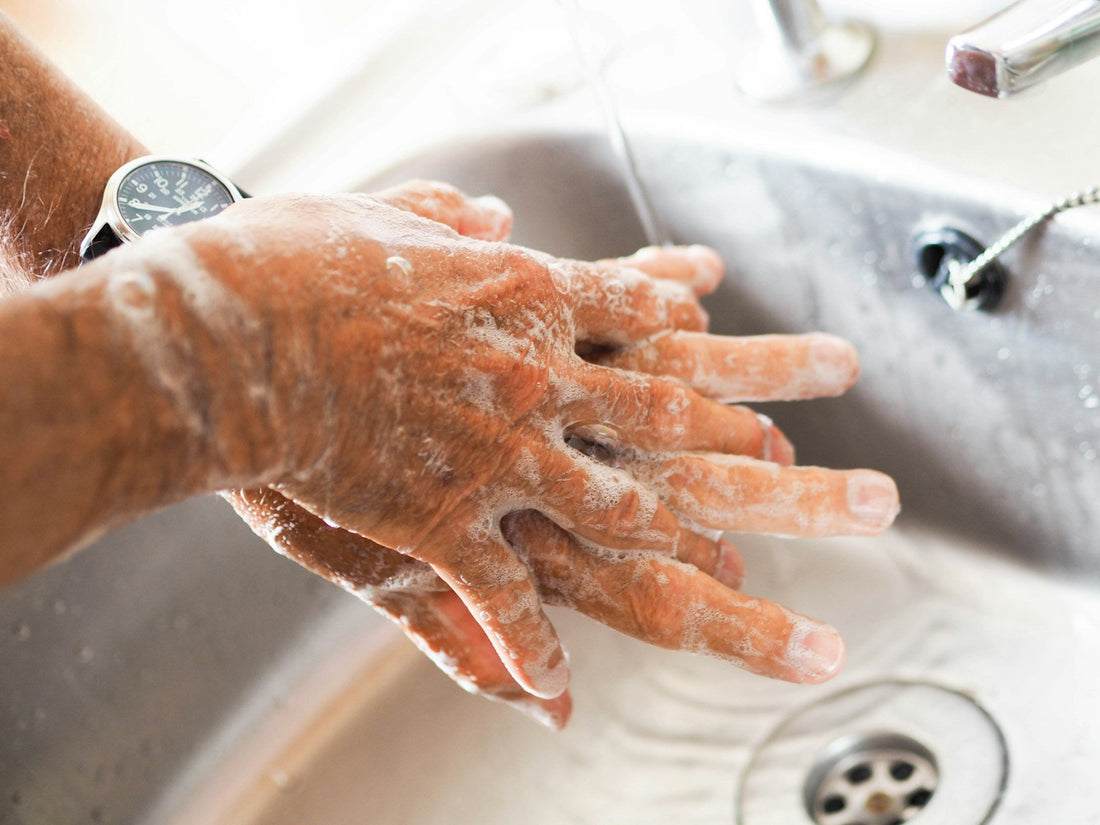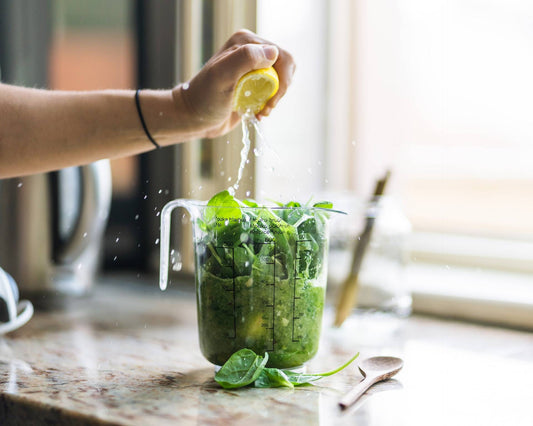

Is Your Skin Talking to You?
Skin irritation, odor, itching, or rashes carry meaning. They are not random surface problems. They are signals from inside — from your gut, your liver, and the balance of the microbes that protect you.
When skin flares, it is often because other detox systems are overburdened. When the gut is leaky or the liver is congested, the skin becomes the messenger. The question is whether we pay attention.
The Skin as a Detoxification Organ
Skin is more than a covering. It is one of the body’s largest detox pathways, working alongside the liver and kidneys. Sweat glands, oil glands, and natural cell turnover each help move out waste.
- Sweat releases salts, urea, and small amounts of heavy metals or pesticides.
- Oil glands carry out fat-based waste like hormone byproducts and chemical residues.
- Shedding cells bind toxins inside the barrier and release them as the outer layer renews.
When the liver or kidneys are strained, the skin picks up the slack. That is when you may notice rashes, hives, or odor. An ammonia smell, in particular, suggests protein waste is not being cleared effectively. This can happen when the gut produces excess nitrogen waste or when detox systems are overwhelmed.
A 2012 paper in Metabolism confirmed that human sweat and skin secretions carry more than water and salt. They contain organic acids, metals, and a wide range of compounds that mirror the internal burden (Proksch et al., 2012). In other words, what comes out through the skin reflects what the body is struggling to manage inside.
Is your skin talking to you through irritation or odor?
The Gut–Skin Connection
The gut and skin share similar designs. Both depend on tight epithelial barriers. Both host complex microbial communities. Both rely on constant communication with the immune system.
When the gut lining becomes leaky, food fragments and microbial debris escape into circulation. The immune system responds by sending out inflammatory signals. These signals circulate and often surface in the skin.
- Eczema often follows microbial disruption in the gut.
- Psoriasis reflects widespread inflammation linked to digestion.
- Acne outbreaks often worsen with poor gut balance.
- Rosacea is frequently tied to small intestinal bacterial overgrowth (SIBO).
A healthy gut microbiome produces short-chain fatty acids, vitamins, and metabolites that calm inflammation and strengthen barriers. When those microbes are missing, the skin loses a major source of natural regulation.
When the gut is inflamed, the skin usually tells the story.
Glyphosate, Minerals, and Skin Irritation
Glyphosate is the most widely used herbicide in agriculture. It disrupts gut microbes and strips away minerals essential for skin health.
The losses include zinc and manganese, but also copper. Copper is critical for enzymes that repair tissue, form collagen, and keep connective structures strong. Without it, wounds heal slowly, collagen breaks down, and skin becomes fragile.
As gut microbes collapse and minerals decline, the liver becomes overloaded. It cannot keep pace with the detox burden. The skin steps in to compensate, releasing waste through sweat and oil. Irritation and rashes are the visible result.
Rates of eczema have climbed in parallel with glyphosate’s rise in food systems. While many factors contribute, the mechanism is clear: disrupted microbes, depleted minerals, and detox overload converge on the skin.
The Skin’s Own Microbiome
The skin carries its own ecosystem of bacteria, fungi, and viruses. Each area of the body — scalp, face, armpits, feet — hosts unique communities adapted to their environment.
These microbes form protective films, compete with invaders, and teach immune cells how to respond. Diversity equals resilience. When the microbiome is balanced, skin resists infection, calms inflammation, and heals quickly.
Excessive washing and harsh products break this balance. Surfactants strip away natural oils. Antibacterial chemicals sterilize protective species. Without these defenders, opportunistic microbes like Staphylococcus aureus or yeast take over, causing dermatitis, chronic itching, or fungal infections.
Signs your skin microbiome is disrupted:
- Dryness that worsens with more lotion
- Rashes that return in the same spots
- Slow healing of cuts or scrapes
- Reliance on steroid creams for relief
Surfactants and “Skin Care” Products
Most soaps contain industrial surfactants — chemicals designed to dissolve oils. They clean, but they also strip the natural barrier that keeps skin balanced. Used daily, they leave skin vulnerable to dryness and irritation.
Skin-care products add further strain with parabens, synthetic fragrances, phthalates, and preservatives. Many of these chemicals disrupt hormones and increase toxic load. Instead of supporting skin, they create cycles of irritation and dependence.
A simple alternative is Castile soap. Made from natural oils, it cleans without harsh surfactants. It respects the skin’s microbial layer instead of destabilizing it.
Ingredients that disrupt skin health:
- Sodium lauryl sulfate (SLS)
- Parabens (methyl, propyl, butyl)
- Phthalates in fragrances
- Triclosan and other antibacterials
Supporting Gut and Skin Together
Food and Microbes
Choosing organic or chemical-free foods reduces glyphosate exposure. Fiber feeds gut microbes that produce compounds calming to the skin. Fermented foods add live organisms that restore diversity.
Targeted probiotics can further support balance. Sugar Shift, for example, reduces endotoxin and supports metabolic health, easing inflammatory pressure on the skin.
Minerals and Detox
Glyphosate chelates a broad spectrum of minerals. Rebuilding mineral reserves with fulvic acids, humic complexes, mineral-rich salts, or clays helps restore enzyme systems that protect skin.
Detox support comes from hydration, fiber, sweating, and movement. Saunas, exercise, and regular elimination relieve pressure on the liver and keep waste moving.
Skin Ecology
On the outside, skin health depends on balance, not sterility. Gentle cleansing, natural oils, and probiotic sprays help maintain microbial defenses. Sunlight and fresh air encourage a healthy ecosystem. Reducing chemical input allows the skin to reset.
Steps for a Gut–Skin Reset:
- Eliminate processed foods and herbicide residues.
- Restore minerals with full-spectrum sources.
- Support gut microbes with probiotics and fermented foods.
- Replace harsh soaps with Castile soap.
- Allow natural oils and sweat to protect the skin.
Are You Listening?
Your skin carries messages about how well your inner systems are functioning. Every rash, flare, or odor is part of that language. When we treat only the surface, we miss the communication.
The deeper work lies in supporting gut integrity, restoring minerals, and protecting the microbial balance inside and out. When those systems are aligned, the skin speaks in clarity, not distress.
Is your skin talking to you? Are you listening?
References
- Proksch E, Brandner JM, Jensen JM. “The skin: an indispensable barrier.” Diabetol Metab Syndr. 2012;4:15. Link
- Samsel A, Seneff S. “Glyphosate, pathways to modern diseases II: Celiac sprue and gluten intolerance.” Interdiscip Toxicol. 2013;6(4):159–184.
- Salem I, Ramser A, Isham N, Ghannoum MA. “The gut microbiome as a major regulator of the gut-skin axis.” Front Microbiol. 2018;9:1459.
- Sanford JA, Gallo RL. “Functions of the skin microbiota in health and disease.” Semin Immunol. 2013;25(5):370–377.
With gratitude,

 Martha Carlin, is a “Citizen Scientist”,
systems thinker, wife of Parkinson’s warrior, John Carlin, and founder of The BioCollective , a microbiome company expanding
the reach of science and BiotiQuest, the first of it’s kind probiotic line. Since John’s diagnosis in 2002,
Martha began learning the science of agriculture, nutrition, environment, infectious disease, Parkinson’s
pathology and much more. In 2014, when the first research was published showing a connection between the gut
bacteria and the two phenotypes of Parkinson’s, Martha quit her former career as a business turnaround expert
and founded The BioCollective to accelerate the discovery of the impact of gut health on all human disease. Martha was a speaker at the White House 2016 Microbiome Initiative launch, challenging the scientific
community to “think in a broader context”. Her systems thinking background and experience has led to collaborations
across the scientific spectrum from neuroscience to engineering to infectious disease. She is a respected out of the
box problem solver in the microbiome field and brings a unique perspective to helping others understand the
connections from the soil to the food to our guts and our brains.
Martha Carlin, is a “Citizen Scientist”,
systems thinker, wife of Parkinson’s warrior, John Carlin, and founder of The BioCollective , a microbiome company expanding
the reach of science and BiotiQuest, the first of it’s kind probiotic line. Since John’s diagnosis in 2002,
Martha began learning the science of agriculture, nutrition, environment, infectious disease, Parkinson’s
pathology and much more. In 2014, when the first research was published showing a connection between the gut
bacteria and the two phenotypes of Parkinson’s, Martha quit her former career as a business turnaround expert
and founded The BioCollective to accelerate the discovery of the impact of gut health on all human disease. Martha was a speaker at the White House 2016 Microbiome Initiative launch, challenging the scientific
community to “think in a broader context”. Her systems thinking background and experience has led to collaborations
across the scientific spectrum from neuroscience to engineering to infectious disease. She is a respected out of the
box problem solver in the microbiome field and brings a unique perspective to helping others understand the
connections from the soil to the food to our guts and our brains.


Waking Up to a Probiotic Breakfast Can Do Wonders for Your Gut Health
Did you know that recent studies show people with poor gut diversity had lower quality of life? The health of your microbiome impacts your mental health, sleep, energy, the risk for chronic illnesses, and much more. A probiotic breakfast can...

Can Probiotic Supplements Make or Break Your Fast?
Intermittent fasting (IF) may have started as a fitness trend for weight loss, but today it's a go-to lifestyle choice for many. Practicing intermittent fasting has been linked with health benefits such as lowering blood sugar and insulin, preventing heart...














 Martha Carlin
Martha Carlin








